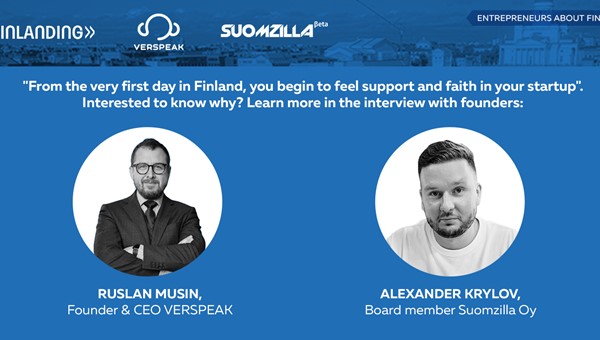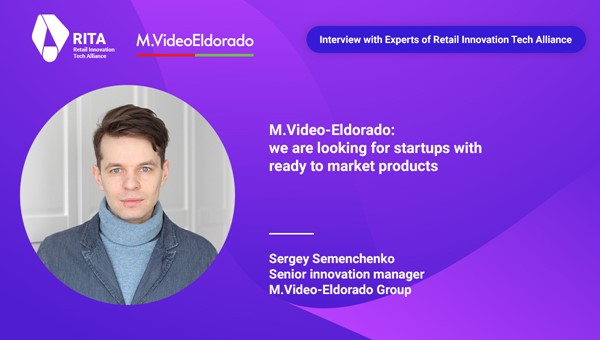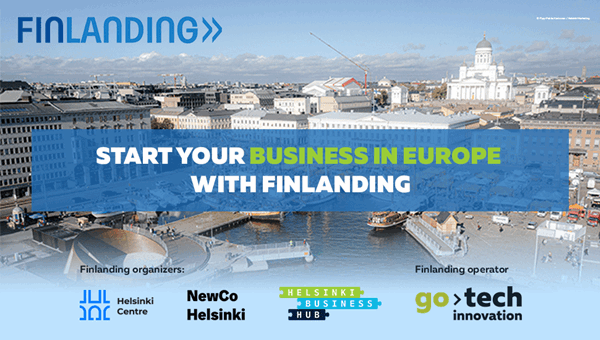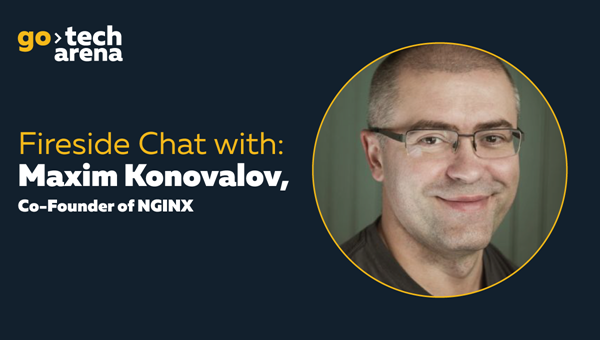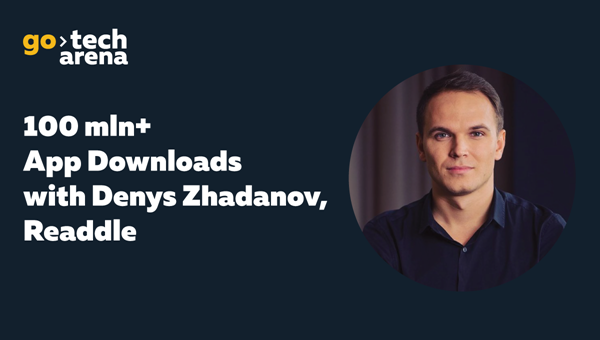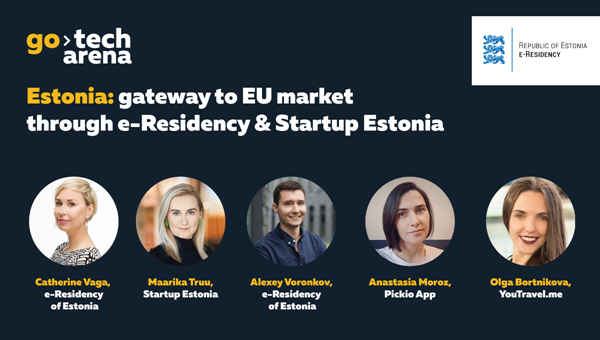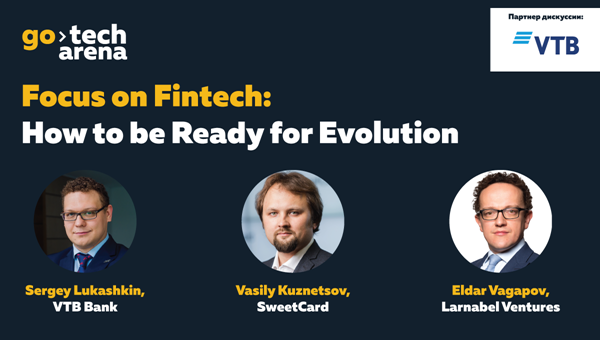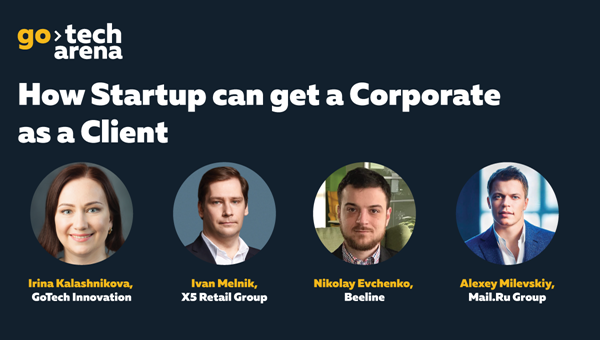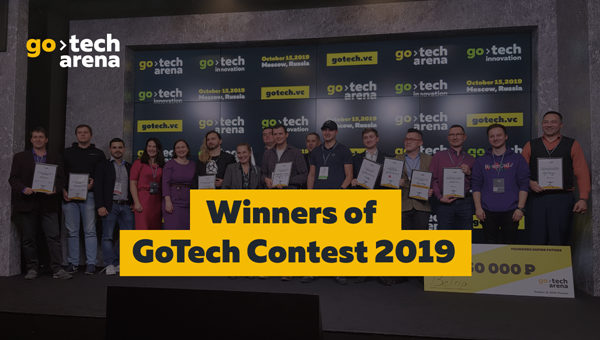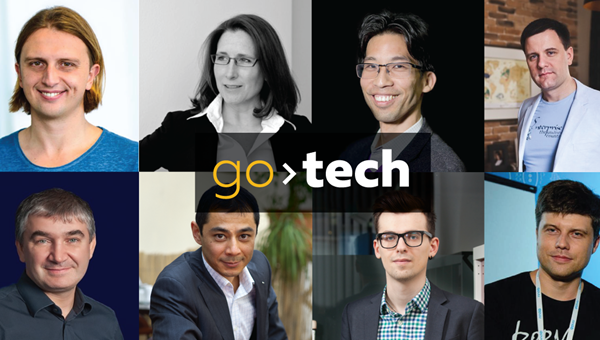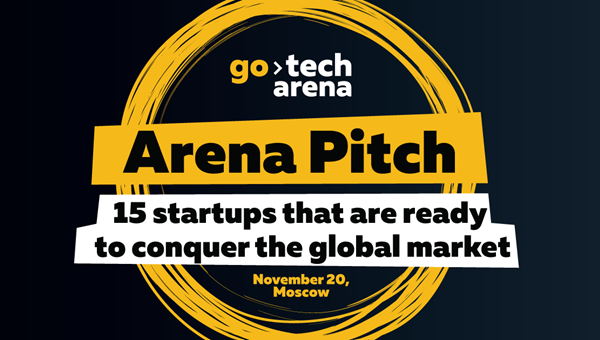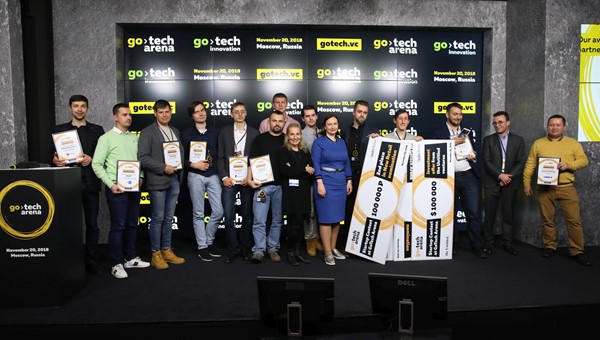12/9/2019
Fireside Chat with Maxim Konovalov, Co Founder of NGINX
Maksim Konovalov, NGINX co-founder, told his company’s story to GoTech Arena Forum attendees. From small room with computers behind the coolers to the great $670M acquisition deal. Alexey Obrovets, event’s MC, tried to understand what was the main point of some huge success.

Maksim Konovalov: NGINX is a web server and a reverse proxy. It is very boring, right? To provide a less technical definition, it is like an entry point for your browser on your laptop or for your mobile client at server side. Like internet entry point for your clients. This is like a very simple definition for a 5 year old kid, like my son.
Today NGINX serves like half of the internet traffic. I am talking about the NGINX open source product that was built initially by a single person Igor Sysoev, who started this project in 2002 as a hobby, and it was an open source project from the beginning. By 2011, without marketing, with no costs for promotion, NGINX served from 6 to 8% of all Internet, not just the Russian Internet, but the whole Internet. Today it’s high performance, secure, and reliable open source software. That is why half of the Internet uses it today, just because of that.
Alexey Obrovets: I remember, I entered Rambler in 2003, and Igor was sitting with most of the servers behind his back, next to the coolers of the servers, writing his software. He looked simply, just a Russian engineer with no fame, sometimes even no respect from the colleagues. How did that simple procedure go big? What happened there? How did it start?
Maksim Konovalov: I still work with Igor today. He is still a computer geek. If you ask him about him, he will tell you that he is not a businessman. Now we have a more comfortable environment for him, but he still works on a code. He comes to the office every day and works on a new code, so, nothing changed. What made NGINX so good, so great? Besides of Igor’s talent as the engineer, I think, the main answer to this question is repetitive exercise. Igor spent 9 years working on this project, and it requires an enormous effort to concentrate on all sources of technical problems. Think about myself, it is almost impossible for me to concentrate on something for 9 years, without interruption. It is really incredible, very exciting, for me, at least.
So, if you want to be famous and rich after 9 years, first, you need a really nice engineer that is only concentrating on his job. Let him work on his ideas. That is really important.
Alexey Obrovets: But how do his ideas become a product?
Maksim Konovalov: Igor builds the product view, so it is not just the code, it is the complete view of the product. He started to build it from scratch, and formed a set of initial ideas, how the product should look like.
As I said previously, NGINX is customer based. But it is not really customer based, it is user-based. It was an open source and freeware project, so you can talk about users, not customers. By 2001, 6 or 8% all Internet used NGINX, it became crystal clear that there are some business opportunities, and three of us came together: Igor, me and we had a third co-founder, and started to talk about it. At some point we decided to try and explore these opportunities. There was a bunch of ideas how to extract money from open source and freeware product. We decided to take an easy one - open core model. You take an open source software and build something paid, a commercial software on top. This is what we have been doing since 2011. In parallel we started to build commercial product, NGINX Plus, and started to sell it to enterprises and corporates.
Alexey Obrovets: Why did you get the investments? According to Crunchbase, beginning from 2011 you’ve received $104M as an investment.
Maksim Konovalov: From the beginning we wanted to build an international global company with sales worldwide. Fast and quickly. So, you need resources for that. You want to hire right people with right attitude, right skills, for your marketing, for sales, and you want the best engineers to work with your products. This is expensive, especially, in the US, so, this is why we needed money. In 2011 we decided to approach venture funds, tell story about NGINX, tell our ideas about possible business around NGINX, and, at that time, we got a couple of term sheets, and started a fundraising for Series A.
Alexey Obrovets: How did you pitch? How did you talk? Where did you even start the conversation?
Maksim Konovalov: We never actually tried to be “Uber for X” or “Facebook for Y” or “Amazon for Z”. I think, just my personal idea about that, investors are actually fed up with these stories. During the whole history of the company we talked with investors in the technology niche, and we had no issues to talk with them about NGINX, mainly, because most of their portfolio companies already used NGINX, so it was very easy to get good references about product. I don’t have any magic recipes or magic formulas how to do that, I can just tell you our story.
Alexey Obrovets: How did you feel about your code going away when you sold it?
Maksim Konovalov: NGINX today is 17 years old. In IT it means 70. It's okay to let it go. But, seriously, we had no concerns for the following reason: F5 Networks is a technology leader in load balancing and application acceleration. We know this company, they are great. This company’s merge is very natural. During the acquisition process, I talked with dozens of people, literally, from F5 Networks, and found out that they have a huge respect to our work. Their engineers enjoyed the product we’d build from the technology point. They appreciate what we’ve done so far. Right people with right culture and right attitude, so I had no concerns. I became confident about NGINX products’ future and our people’s future within this company.
Alexey Obrovets: There is absolutely no material on your company in media. There are big companies that you read about all the time, something new and new in TechCrunch and other media. Why don’t we see a lot about NGINX?
Maksim Konovalov: We are in a B2B market, so we don’t really need such shiny stories and scandals. Another point I have: NGINX Open Source has a super strong brand. If you walk in San-Francisco wearing jacket with NGINX logo, someone will approach you and be like: “Thank you for a great software”. This happens every day, so it’s a very strong brand, and it saved us, and still saves, millions of marketing dollars. On the other hand, press and media want something hot, something they can sell to their audience, but NGINX is a really deep technology boring company.
Alexey Obrovets: That’s a big question then. How can an open source company with a lot of open source codes hope to be famous and rich again? As I understand, most of the open source projects have a problem, and their future is always open sourced till the end of the days.
Maksim Konovalov: It is very hard to convert open source project or product into commercial entity. There are just a few good examples of right strategy, like Red Hat, and, unfortunately, I can’t provide a good recipe for that, as well. We enjoyed by the open core model, but it doesn't mean it will work for everyone. It is a very unique combination of an open-source product and our commercial strategy.
Alexey Obrovets: So here's the situation. For example, if I were an engineer and I wrote code, open sourced it, and 2,000 companies use my code and are making money. What are my next three steps in trying to make some money out of that open source code?
Maksim Konovalov: There are several options here. You can provide technical support or a customization service. You can start to sell licenses, but it is a very tough topic, especially, if you have initially an open source project with permissive license. You can convert, and this is probably the most interesting option: convert your open source product into service, something that you sell as a service. In NGINX we tried this approach as well, and at some point, we ran a SaaS platform, a software-as-a-service platform for NGINX performance monitoring and alert management, but it didn't work for us, so we had to stop it eventually.
What is more preferable for the new entrepreneurs today: open source model or commercial model? It depends on a software. Either way can work and either way can fail. No good answer, unfortunately. You have to sit and check what options you have. Open source is quite a relevant model right now, and open core works for some companies. At the same time, there are several discussions right now on how to fight with, for example, Amazon. Amazon takes MongoDB and converts MongoDB to a service; takes MongoDB for free and converts to a paid service. MongoDB company has no benefits on that, basically they lost customers, because customers moved to AWS and use MongoDB as a service, and don’t bring any money to the MongoDB company. This is a real issue. They are trying to fight with AWS and Google Cloud and Azure to extract some money back to the company.
Alexey Obrovets: Could you achieve everything you have achieved by now if you stayed in Russian Federation?
Maksim Konovalov: We stayed in Russia. Igor is in Russia, and I am in Moscow, and one of our R&D offices is in Moscow. It is possible to build a global company, sitting in Russia. We were very lucky to hire a brilliant CEO for our San-Francisco headquarters in 2014, Gus Robertson. He is now a Head of NGINX business unit at F5 Networks. Still, it was very tough to work remotely with the rest of our company, remotely with our West foreign customers, with different culture, with a different way of thinking and doing business. So, thinking back to 2011, today, I would say I would move to the US, to stay close to all this stuff.
In 2011 I had a normal engineering office in Moscow, and I lead this office, and I am still leading this office, so I wanted to be sure that we’re building the right software with right people. We hired the right people, we had right processes and everything, technical support, professional service. We built all this stuff and elements from scratch, this is why I stayed in Moscow.
Alexey Obrovets: What transformation does an engineer need to become an entrepreneur?
Maksim Konovalov: My transformation into an entrepreneur-like person started a while before NGINX, and is still in process. Igor doesn’t want to be a businessman at all. This is good, no problem with that. So, how an engineer can become an entrepreneur? I don’t know, maybe read some magic books? What I can recommend to do, maybe, learn other cultures? Western culture, Asian culture. Work abroad. Travel. Basically, in our case, what would be helpful, learn western culture; how they think, how they are doing business, because there are many differences, and this experience is very helpful. It was very helpful for us, and, I think, it is helpful in general.
Alexey Obrovets: Can you name 2 mistakes that you as a company made in the whole process?
Maksim Konovalov: We spent too much time talking, so we had to start in 2007, maybe in 2009. We had to go quicker. We spent a lot of time talking and discussing.
Alexey Obrovets: So, looking back, what advice do you give to young engineers that come to you and say: “Okay, I have some code. I am sure it’s good. I am sure it may become a product. What are my next steps?”.
Maksim Konovalov: The first one is - don’t pay much attention to advices, mainly because they are cheap, or even free; real actions are not cheap, so concentrate on real actions and concentrate on your gut feeling. You have intuition, you and your team know your product or service and know your strategy. Trust your gut feeling. Another advice is to never think that this is a short run. This is quite contrary: this is a long run. Be prepared and plan accordingly. We all know that the journey of thousand miles starts from the first step, and the first step is very important, but don’t forget about million other steps you have to do and million steps in front of you.
Check aftermovie out: https://youtu.be/X6SXe1SPu-8


